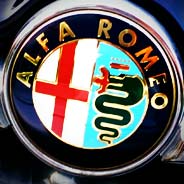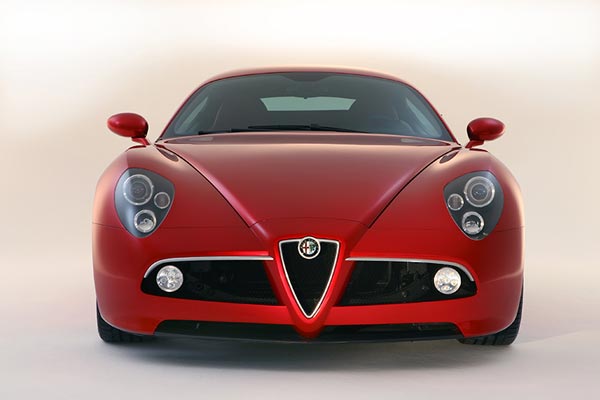Alfa Romeo History

Alfa Romeo are a car manufacturer close to the hearts of many motoring enthusiasts. From the 1920s to the 1950s they manufactured exotic road cars, while their racing cars, driven by racing legends like Juan Manuel Fangio, Tazio Nuvolari and Caracciola dominated Grand Prix racing, while simultaneously launching the career of Enzo Ferrari.
The origins of Alfa Romeo
In 1910 Cavalier Ugo Stella acquired the shares of Società Italiana Automobili Darracq, the Italian plant of French car maker Darracq. The company changed it’s name to “Anonima Lombarda Fabbrica Automobili” (Lombard Automobile Factory, Public Company) or A.L.F.A.
The first car – the 24 HP – was also made in 1910. Designed by Giuseppe Merosi, it’s straight-4, 4-litre engine, produced 42bhp, giving the car a top speed of over 100 Km/h. Two 24HP’s entered the 1911 Targa Florio road race, one was on course for victory but a freak accident temporarily blinded the driver and he was forced to withdraw.
With the advent of the Great War, the company found itself in the hands of Nicola Romeo, an Italian entrepreneur who halted car production in favour of producing military equipment for the war effort. After the war ended, production did not re-start immediately but by 1920, cars once again rolled out of the factory baring the new name Alfa Romeo.
Alfa Romeo Badge
The famous badge is credited to draughtsman Romano Cattaneo (who worked for A.L.F.A). Designed in 1910, he fused together two emblems from Italy’s heraldry. The red cross on the left of the badge is the emblem of the city of Milan, while the right shows the emblem of the House of Visconti, the Biscoine. Over time the badge has changed, adding the words ‘Alfa Romeo’ and ‘Milano’ to the outer ring. The word Milano was removed in the 1970s when the Pomigliano factory, started manufacturing the first AlfaSuds, in South Italy.
Alfa Romeo in motorsport
Alfa Romeo’s first motorsport success came in 1913 when Nino Franchini finished second in the Parma-Poggio Berceto race in an A.L.F.A 40-60HP. Since then, their cars have scooped victory in pretty much every racing formula ever devised. Through the 1920s and 1930s, Alfa Romeo won several championships in Grand Prix racing, the forerunner of the modern Formula 1 championship but it doesn’t stop there. When the modern Formula 1 championship started in 1950, Giuseppe Farina put his car on pole, won the race and scored the fastest lap and at the end of the season he was crowned world champion and his car was? An Alfa Romeo. Alfa were so dominant, that at one race in the 1950’s they were so far ahead of the competition that their cars famously pulled in on the penultimate lap to have a polish so they’d look their best as they crossed the line.
Over the years Alfa Romeo have won pretty much every motor racing event they have entered; winning the Mille Miglia 11 Times, the Targa Florio 10 times and the Le Mans 24 hour race four times. They’ve scooped 17 European Touring Car championships, 5 World Sportscar Championships.
Ownership and Alfa Romeo today
Over the 100+ years that Alfa Romeo have been making cars, it’s probably fair to say, they haven’t been as successful in business as they have been on the track. In 1933 Nicola Romeo left the company and due to the Wall Street Crash Alfa Romeo had to be bailed out by the Italian Government.
After the Second World War and still in state hands, the Alfa Romeo factory had to be rebuilt after bombing. The demand for luxury cars had all but dried up and subsequently Alfa Romeo’s focus shifted to building, more-affordable, production cars.
Despite constant success in racing circles and the production of successful domestic models, by the mid 1970s the company was struggling financially. In 1986 after various deals with the likes of Ford had fallen through, Alfa Romeo were purchased outright by Fiat.
Today Alfa Romeo are part of Fiat Chrysler Automobiles and produce the Mito, Giulietta and 4C sports car.
If you’re an Alfa Romeo owner, be sure to check out our owners’ club page to find out about clubs near to you, or for information about club meetings and events.
Click the images below for more information about a classic Alfa Romeo.









